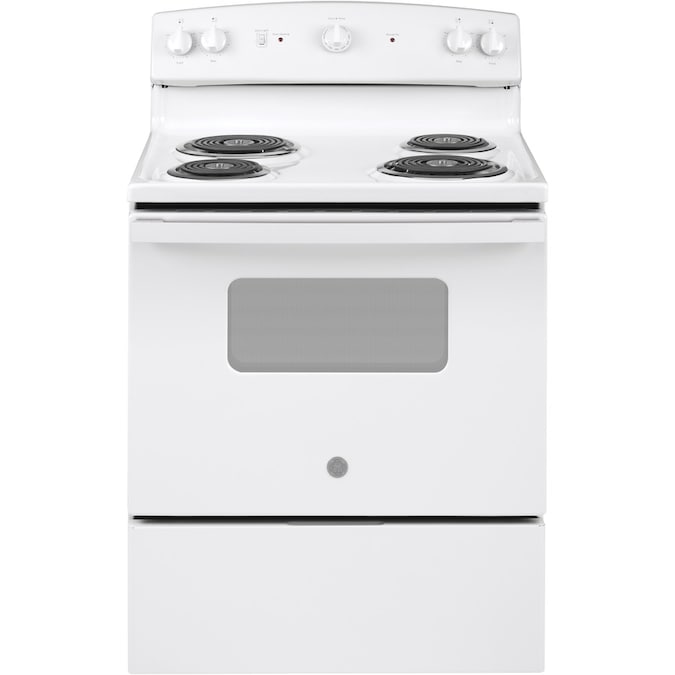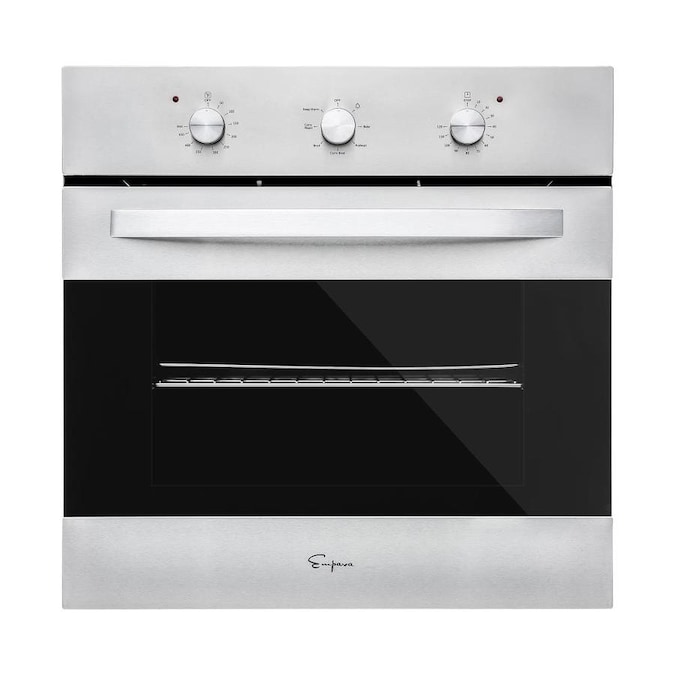Forum Discussion
- GdetrailerExplorer III
CharlesinGA wrote:
Gdetrailer wrote:
I am a bit shocked that any appliance would come with a aluminum wire lead.. Typically there is an access panel that gives you terminals so you can add a pigtail with plug of your choice or you add your own wire to the oven terminals.. Check to see if there is a terminal box..
Same here. Reading this thread thinking, who would make an oven with loose wires hanging out. You have stud terminals and hook a store bought cord with 14-50 or whatever is called for plug on it, and plug it in and slide it in place. Done. Something is not right here.
Charles
You are think in terms of a "standalone" stove with oven..
Which DOES have a electric box with terminals.
OP however is not working with a standalone stove, they are working with a "built in" wall oven..
Has no top burners and permanently mounts into your kitchen cabinets.
My parents home had the wall mounted oven with a separate stove top, when we replaced their original 1950s wall oven around 2000-2001 the original had a electrical box on the side of the oven..
The new replacement didn't, it came with a unterminated pigtail attached. My Dad had installed dedicated circuits and outlets for the stove and oven.. Made removal and replacement of the oven a snap and all we had to do was move the plug to the new oven pigtail.
Back in the 1950s, pretty much any wiring used contained Asbestos.. Which had a very high heat rating by default.. His house was built with all Asbestos wiring.
Modern day wiring contains no Asbestos and has a lower heat rating. For an application like a oven, the manufacturer would most likely have to use high temperature rated wiring.. So I suspect to prevent the use of normal Romex, they are providing a pigtail which will have a high temp rating..
That pigtail CAN however be terminated with a suitable amperage 240V/120V plug and outlet to make servicing and replacement much easier if one wanted to make life easier. - Built in ovens and built in stove tops are hardwired.
- Attached cord looks like this:

You hard wire to a J-box - CharlesinGAExplorer
Gdetrailer wrote:
I am a bit shocked that any appliance would come with a aluminum wire lead.. Typically there is an access panel that gives you terminals so you can add a pigtail with plug of your choice or you add your own wire to the oven terminals.. Check to see if there is a terminal box..
Same here. Reading this thread thinking, who would make an oven with loose wires hanging out. You have stud terminals and hook a store bought cord with 14-50 or whatever is called for plug on it, and plug it in and slide it in place. Done. Something is not right here.
Charles - GdetrailerExplorer III
Horsedoc wrote:
I have a transformer by my house with copper cable attached to the aluminum cable coming into the house. The two are joined together with a squeeze-on connector or aluminum. Open to the air and rain in all weather. Only damage is where the squirrels have gnawed the squeeze-on.
Comment on that?
Electric Company linesman used the PROPER termination which is a TIN plated copper or TIN plated aluminum crimp. The TIN layer is less reactive to either copper or aluminum. The TIN layer allows for interfacing to dissimilar reactive materials like copper or aluminum.
If you notice, they did not "butt" or directly connect the dissimilar wires together, they are not touching, only the termination (crimp connector) touches both materials.
With the proper crimper with proper pressure, both wires and crimp portion of the terminations are crimped tight enough to reduce moisture infiltration under most circumstances.
Additionally, those crimp joints are outside and not anywhere close to flammable objects if the termination were to fail and over heat..
CU/AL Termination failure INSIDE your home in breaker panel, junction box or outlet/switch area can be catastrophic and lead to burning your house down.. That is the reason why Aluminum wire is no longer allowed to be installed in new buildings for BRANCH CIRCUITS since the late 1970s. That is why I was a bit shocked when the OP of this thread thought they had AL wire on their new built in oven (which it was not, it was actually tin plated copper which looks a little like aluminum).
See HERE for some explanation.
AL is still allowed for service entrance from the mast, to the electric meter socket to your main breaker. But, you must make sure when installing it you use NoAlox or OxGard on the service entrance wire and the termination is torqued properly.
EXISTING AL branch circuits in old buildings are "grandfathered" so you do not need to rip out and rewire it, but you do need to take special care with the devices interfaced to it to ensure connection isn't going to deteriorate from incompatible materials.
On edit..
Took a pix of the electric company connection at my house..
That is the neutral wire, the Hots, they covered with electrical tape so a pix of those wouldn't illustrate what I am talking about.
If you look very closely, you will see that the termination actually has TWO separate openings, one wire goes in one of the openings and the other goes into the other opening.. Neither wire can touch together.. Once both wires have been inserted they use a big crimper made for the connector to crimp both sides at the same time. - MEXICOWANDERERExplorerThat is an expensive tin clad AL/CU butt junction with a divider running down the middle to keep the two metals apart. They can dunk the two cable ends in preservative, stickem into the butt splice then squeezem. Outside the tin cladding is unimportant as it can oxidize to a dull gray without hurting conductivity.
Around salt air, especially when it's thick, very warm and moving it's a different story. The salt can allow a corona path to form and electrolysis can eat metal for breakfast. Twice a year CFE pumpers wash down our 12.5 KV insulators and demand owners of private transformers (three-phase)do the same to eliminate line bleed off. Here you will find sealant heat shrink or amalgamating rubber wrap on high voltage connections.
Working around RV breaker boxes I will TIN bare copper stubs, then dunk them in electrolytic grease before sliding them into a buss or breaker. My favorite for this is pure lead not solder.
My school of hard knocks came when I was building trawlers (draggers) Outside lighting was 24 volts. I replaced them with larger wattage 32 volt bulbs. I never heard of any bulb burnouts.
Mast head and NAV lights were also critical, a ride to the top of a mast in a bosun's chair is not fun. For externally exposed use I chose cross-link polyolefin insulated wiring. They use this insulation on fusible link wire for automotive. Hundred feet rolls were not cheap.
For a good example of why high quality matters, look no further than Bosch style relays for automotive. Underhood cheap relays turn to green powder in a year or so. Pry the shell apart and look. Only Bosch TYCO makes truly hermetically sealed relays. After almost losing a three thousand dollar irreplaceable engine twice because of radiator fan failure, I now have a gallon bag filled with TYCO relays.
My 50-year-old joke term for doing premature maintenance or failure repairs is RETROFITTING.
I despise doing it. When electrical breaks prematurely I whip out my calculator and watch and start tabulating losses. Appreciative vacationers parked in places like Tuolomne Meadows campground only served to catalyze my convictions. They were looking at a 150-mile tow, a lost campsite and a destroyed vacation. - HorsedocExplorer III have a transformer by my house with copper cable attached to the aluminum cable coming into the house. The two are joined together with a squeeze-on connector or aluminum. Open to the air and rain in all weather. Only damage is where the squirrels have gnawed the squeeze-on.
Comment on that? - MEXICOWANDERERExplorerThe last time I was "roped" was when the battery vendor I rented from was cited by the Fire Dept. I ended up running circuits, dozens of them in EMT. That was 30 years ago. My battery testing was interrupted as well as the building of Quicksilver. It was a 300 amp 480 service with ground foundation transformer. Three phase 125 Kw WYE transformers don't grow on trees. Edison was forced to do an enclosed underground installation. I needed lots of power for battery testing My alternator bench tester had a 15HP motor to spin the 50SI alternators. But it would not drive the 400 amp Niehoff to max amperage. The power bill always seemed to have a comma in the total.
- MEX, if I ever need someone to rope a house I am going to pull you out of retirement to supervise and procure materials.
- MEXICOWANDERERExplorerThanks for the update. When I bought the hotel panel they looked at me like I was nuts when I asked for copper. So did Consolidated Electrical Supply in California. Maybe they're getting smarter. I bought that Siemen's panel in Port Arthur Texas. I subsequently purchased twenty feet of pure copper ½" square rod then spent a weekend drilling and tapping. Finding 316 stainless knurl tip Phillip's set screws was done through McMaster Carr. My Hot Lipps graphite squeeze solder tool will help install #6 x 10 gauge forked terminals for the nickel plated 20 amp receptacles when I return home. They will be installed under weather proof enclosures with insulated flap exposed receptacle boxes. My casita has an inset kWh meter and interior Klixxon breakers just like the bus. But with blinking LED tripped lights. Amazing what a fault wired panel illumination LED light can accomplish. The lamp breaker faults and the panel lights up. This is being done so kitchen appliances can walk and chew gum. I.E. coffeemaker, microwave and toaster all together.
About Technical Issues
Having RV issues? Connect with others who have been in your shoes.24,198 PostsLatest Activity: Feb 12, 2025